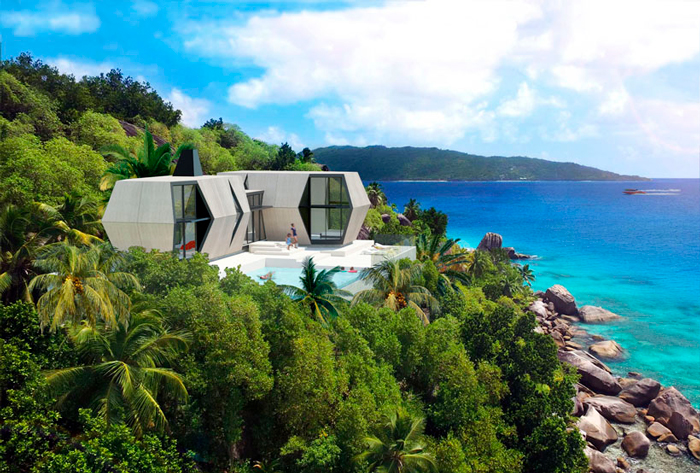Due to natural disasters, many people are often left homeless. In many countries, the problem of accommodating victims is solved simply – they usually settle such people in budgetary institutions such as schools or public stadiums.

As a result, for quite a long time, people are forced to live in spaces with no walls to separate different families.
In developed countries, the problem is solved differently – they put modular houses. Initially, these were some sort of places for an interesting vacation, but now it is more of salvation for people in a difficult situation.
The Hariri & Hariri Architecture capsule is just an example of a modular pod. Initially, the company developed luxury capsules for outdoor recreation, but now it helps refugees affected by natural disasters.
As a result, the concept can be placed anywhere: these are a kind of panels that are somewhat reminiscent of origami. Indeed, they seem to be made up of small parts, like a Japanese paper toy. The output is an assembled house of a hexagonal shape, which allows it to be extremely stable.
By the way, these modular pods were developed in Iran, where various disasters sometimes occur. The architects relied on their own experience of losing a home. Modular pods can accommodate families of 3-4 people, which is quite decent, and the buildings themselves, if desired, can be combined to create even more space.
The pod itself can be installed without any tools at all. It is based on cement, so it is inherently very light. The windows here are made of glass, so there is also enough light, and there will be no need to purchase additional generators.
If no disasters occur, the modular pods are quite suitable for peaceful life – they can be used as small hotels, like bungalows, or simply installed as a guest house.










